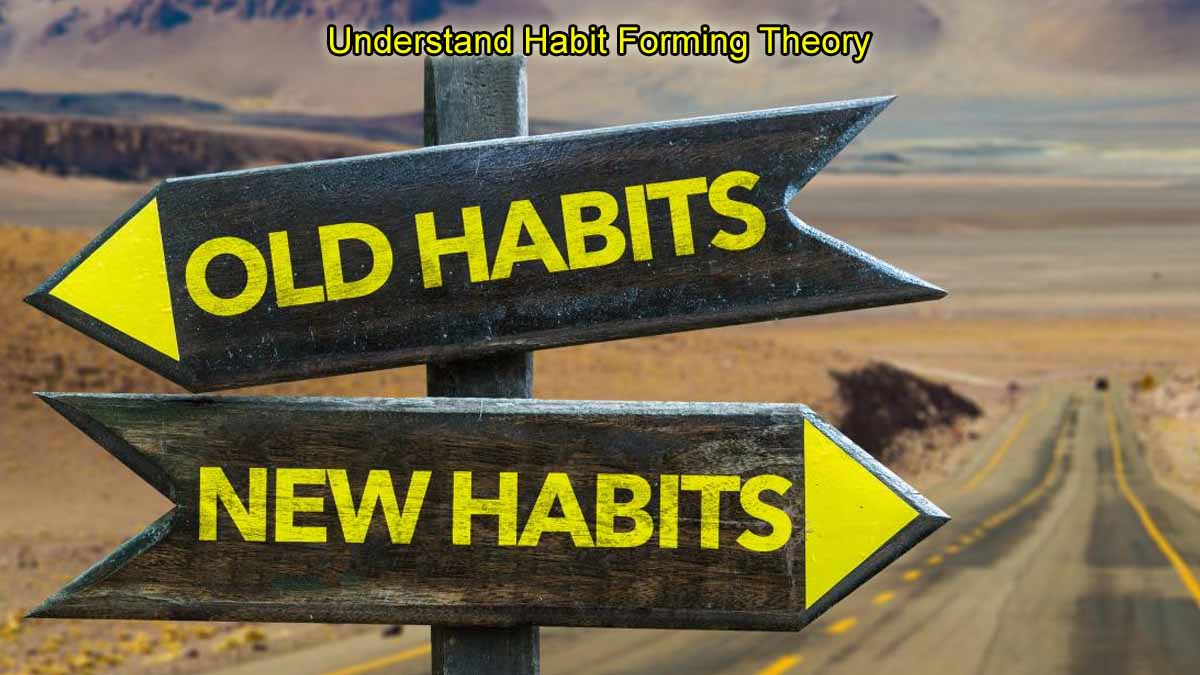Hello guys today we are going to talk about Habit Forming Theory Habits play a significant role in our lives, shaping our routines, actions, and ultimately, our outcomes. From mundane tasks like brushing our teeth to more complex behaviors like exercising regularly, habits influence a considerable portion of our daily activities.
But what exactly drives the formation of these habits, and how can we leverage this knowledge to foster positive changes in our lives? Enter Habit Forming Theory, a framework rooted in psychology and neuroscience that offers insights into the mechanisms behind habit formation and maintenance.
Understanding Habit Forming Theory
Habit Forming Theory is mainly about how our actions get stronger when they get rewarded. In this theory, habits grow when we do things over and over and get rewarded for them.
It’s like a loop in our brain that has three parts: first, there’s a cue that starts it all, then there’s the action we do (routine), and finally, there’s the reward we get for doing it.
Cue: The cue serves as the trigger that initiates the habit loop. It can be anything from a specific time of day to a particular environmental cue or even an emotional state. For example, feeling stressed (cue) might trigger the habit of reaching for a cigarette (routine) to alleviate that stress.
Routine: The routine represents the behavior itself—the action that we take in response to the cue. This could involve physical actions, such as grabbing a snack or checking our phone, or it could be a mental behavior, like worrying or daydreaming.
Reward: The reward is the positive reinforcement that reinforces the habit loop, making it more likely to be repeated in the future. This can be anything that satisfies a craving or fulfills a desire, whether it’s the taste of food, the feeling of accomplishment, or the relief of stress.
The Habit Forming Process
The formation of a new habit typically follows a four-stage process
- Cue Recognition: In this stage, individuals become aware of the cues that trigger certain behaviors. By identifying these cues, individuals can gain insight into the underlying triggers of their habits.
- Routine Establishment: Once the cue is recognized, individuals engage in the routine or behavior associated with it. Repetition is key during this stage, as consistent practice reinforces the habit loop.
- Reward Association: As individuals engage in the routine, they experience the associated rewards. These rewards strengthen the neural pathways associated with the habit loop, making the behavior more automatic and ingrained.
- Habit Integration: Over time, the habit becomes deeply ingrained into the individual’s routine, requiring less conscious effort to execute. At this stage, the behavior becomes a natural part of the individual’s daily life.
Application of Habit Forming Theory
Understanding Habit Forming Theory can be immensely valuable in various aspects of life, from personal development to business and marketing strategies. Here are some practical applications.
Personal Development: By understanding the cues, routines, and rewards associated with our habits, we can intentionally design our environments and routines to support positive behavior change. This might involve removing or modifying cues that trigger unwanted habits and replacing them with cues that promote healthier behaviors.
Product Design: Businesses can leverage the Habit Forming Theory to design products and services that encourage habitual use. By identifying the cues and rewards that drive consumer behavior, companies can create products that become integrated into users’ daily routines.
Marketing and Advertising: Marketers can use insights from Habit Forming Theory to create compelling campaigns that resonate with consumers’ habits and desires. By aligning products or services with existing habits and offering rewarding experiences, marketers can increase engagement and loyalty.
Habit Forming Theory In Martial Arts
Habit Forming Theory helps us understand how habits are made and kept going. It says that habits happen because of three things: cues, routines, and rewards. Let’s look at how this works in martial arts. When martial artists practice, they have cues that tell them it’s time to start, like the sound of a bell or seeing their uniform. These cues make them do specific things, like practicing moves or exercises. And when they do these things, they get rewards, like feeling proud, getting stronger, or getting better at their techniques.
The more they practice and feel good about it, the more their brains get used to it. Eventually, it becomes a habit—they do it almost without thinking. With Habit Forming Theory, martial artists can plan their training to make good habits stick better. This way, they can keep getting better at martial arts and reach their goals. So, whether it’s learning new moves or staying fit, understanding habits can help martial artists train smarter and improve faster.
Conclusion:
Habit Forming Theory helps us understand how our brains and feelings make us develop habits. By knowing what starts our habits, what we do regularly, and what rewards us, we can make good habits and stop bad ones.
Whether we want to improve ourselves, run a business, or sell things, using Habit Forming Theory can help us change our behaviors for the better and get better results in life. If you found this article helpful, please comment below.

Martial arts trainer Karatians School India, Thank you for reading this post. This website is about martial arts, sports, and entertainment. Its goal is to make more people aware of martial arts and help them become self-reliant.

